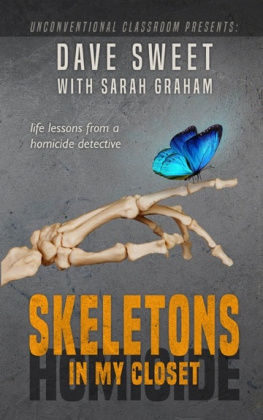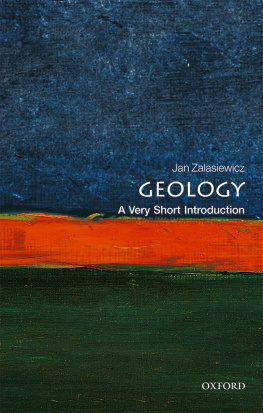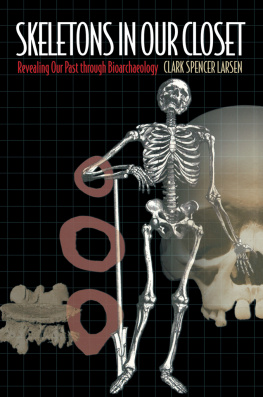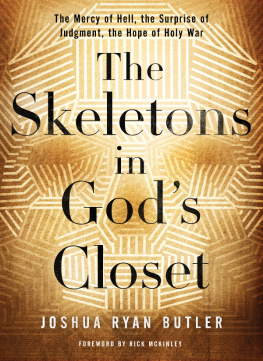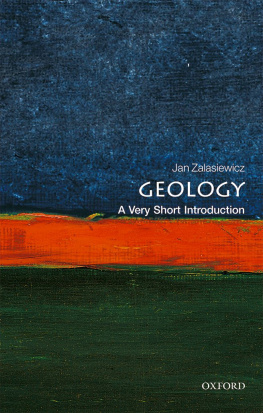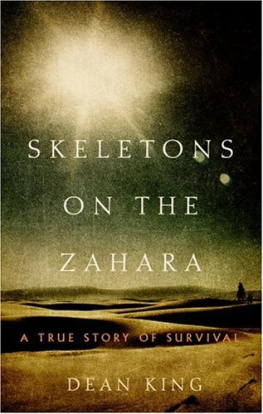Zalasiewicz Jan - Skeletons: The Frame of Life
Here you can read online Zalasiewicz Jan - Skeletons: The Frame of Life full text of the book (entire story) in english for free. Download pdf and epub, get meaning, cover and reviews about this ebook. year: 2018, publisher: Oxford University Press, Incorporated, genre: Religion. Description of the work, (preface) as well as reviews are available. Best literature library LitArk.com created for fans of good reading and offers a wide selection of genres:
Romance novel
Science fiction
Adventure
Detective
Science
History
Home and family
Prose
Art
Politics
Computer
Non-fiction
Religion
Business
Children
Humor
Choose a favorite category and find really read worthwhile books. Enjoy immersion in the world of imagination, feel the emotions of the characters or learn something new for yourself, make an fascinating discovery.
- Book:Skeletons: The Frame of Life
- Author:
- Publisher:Oxford University Press, Incorporated
- Genre:
- Year:2018
- Rating:3 / 5
- Favourites:Add to favourites
- Your mark:
- 60
- 1
- 2
- 3
- 4
- 5
Skeletons: The Frame of Life: summary, description and annotation
We offer to read an annotation, description, summary or preface (depends on what the author of the book "Skeletons: The Frame of Life" wrote himself). If you haven't found the necessary information about the book — write in the comments, we will try to find it.
Skeletons: The Frame of Life — read online for free the complete book (whole text) full work
Below is the text of the book, divided by pages. System saving the place of the last page read, allows you to conveniently read the book "Skeletons: The Frame of Life" online for free, without having to search again every time where you left off. Put a bookmark, and you can go to the page where you finished reading at any time.
Font size:
Interval:
Bookmark:


Great Clarendon Street, Oxford, OX2 6DP, United Kingdom
Oxford University Press is a department of the University of Oxford. It furthers the Universitys objective of excellence in research, scholarship, and education by publishing worldwide. Oxford is a registered trade mark of Oxford University Press in the UK and in certain other countries
Jan Zalasiewicz and Mark Williams 2018
The moral rights of the authors have been asserted
First Edition published in 2018
Impression: 1
All rights reserved. No part of this publication may be reproduced, stored in a retrieval system, or transmitted, in any form or by any means, without the prior permission in writing of Oxford University Press, or as expressly permitted by law, by licence or under terms agreed with the appropriate reprographics rights organization. Enquiries concerning reproduction outside the scope of the above should be sent to the Rights Department, Oxford University Press, at the address above
You must not circulate this work in any other form and you must impose this same condition on any acquirer
Published in the United States of America by Oxford University Press 198 Madison Avenue, New York, NY 10016, United States of America
British Library Cataloguing in Publication Data
Data available
Library of Congress Control Number: 2017953468
ISBN 9780198802105
ebook ISBN 9780192522467
Printed in Great Britain by Clays Ltd, St Ives plc
Links to third party websites are provided by Oxford in good faith and for information only. Oxford disclaims any responsibility for the materials contained in any third party website referenced in this work.
To Adrian Rushton
nonpareil colleague and scholar of ancient skeletons
This book arose, as did the previous ones we have written, out of a moment of improvisation, which then somehow had to be carried forwards to some kind of conclusion. The idea was to take skeletons, the (mostly) hidden framework of biological life, which, in ancient form, has also provided the frameworkin somewhat more exposed and visible formof much of our professional lives, and make sense of them in the way that they have underpinned the development of complex life on Earth.
In making this story take shape, we are deeply grateful for the unceasing support and encouragement of Latha Menon and others at Oxford University Press. Latha has an unrivalled ability to see where a narrative line might be heading for the rocks, and to gently steer it into more productive waters, while Jenny Nugee and her colleagues have been cheerfully patient with our perilously close encounters with deadlines, and marvellously efficient in compiling the finished product.
As to the subject matter, the content here has been influenced by all the people who have influenced us as we have come to grips with fossil skeletons, old and new, in our studies and in our working lives. That is an awfully long list, but includes colleagues such as David and Derek Siveter, Richard Fortey, and the late and much missed figures of Dick Aldridge and Barrie Rickards. We dedicate this book to Adrian Rushton, who has influenced these pages both directly and indirectly; the range of fossil skeletons he has covered, expertly, has not been rivalled since the days of the great Victorian-era polymaths, and the amount of help and support he has given to others through his career has been immeasurable. We also thank the following for the images that we have used in this book and for advice on images: John Ahlgren, Peiyun Cong, Ivn Cortijo, Jason Dunlop, Dennis Hansen, Tom Harvey, Soraya Marali, David Martill, Giles Miller, Chris Nedza, Mark Purnell, Adrian Rushton, Paul Selden, David Siveter, Derek Siveter, Vincent Perrier, Ulrich Salzmann, Bernd Schne, Ian Wilkinson, Xianguang Hou, Xiaoya Ma, and Jeremy Young.
We thank our families, tooAsih, Kasia, Milana, Matfor the support and inspiration that they continually giveand infinite patience, too, as we steal time to write this book. And our parents too, Doreen, Les, Irena, and Feliks, who gave us the inspiration to be inquisitive.
What links the tumbleweed that has invaded the North American plains, the single outstretched canine tooth of a narwhal, the fourth finger of a pterosaur, the carapace of a beetle, and the ancient submarine mountains, reaching 5 kilometres tall, at the top of which the coral islands of tropical oceans just emerge at the ocean surface? These are all forms of skeleton, produced by living organisms in an extraordinary late flurry of evolution on a planet that was already easing into middle age.
Imagine, then, a world where skeletons had not evolved. We would not see birds flying through the air to perch on a tree branch, or a cat leaping high onto a garden wall (perhaps to try to catch one of those birds), or a crab scuttling on a beach, or a child running through a playground. We might be forgiven for thinking that a world without such familiar things would be a bizarre place indeed. But that is just how it was for most of the history of life on Earth.
The Earths surface now holds a vast array of skeletons, from microscopic to gigantic. Some piles of skeletons, like the Great Barrier Reef of Australia, are so large that they can be seen from space, while others, visible only through powerful microscopes, show exquisite preservation of minute structures from hundreds of millions of years ago. Specimens of the most spectacular skeletons have been avidly sought by humans, even in antiquity, and their power to awe remains undimmed. Looking from another perspective, skeletons en masse, assembled down the years and stored within layers of rock, have been crucial in controlling some of the Earths most important chemical cycles, and in maintaining a habitable climate on our planet.
In this book we look at skeletons from many angles, and encompass all of those mineral frameworks that have allowed life to engineer the planet we live on. We look at the skeleton innovations that occurred in deep antiquity, within tiny cells that built forms of scaffolding for themselves, and how this led to the eventual evolution of the familiar skeletons of today. We explain the very different strategies by which skeletons can be built, and we show how these frameworks can engineer an extraordinary diversity of bodies, shapes, sizes, and solutions to the problem of living.
Looking at life on Earth from the perspective of skeletons can help to answer some big questions. Why are skeletons made from certain materials? Why do some animals have their skeletons on the outside, and others on the inside? What advantages have skeletons conferred to animals and plants, and what lifestyle possibilities have they enabled? And how have they re-engineered our planet, in providing the framework for sophisticated networks of life that fashioned the evolution of Earths oceans, land, and atmosphere.
How have skeletons, too, helped human life? The bones of dinosaurs and marine reptiles are not only prized as spectacular museum pieces, to give us glimpses of the Earths ancient and dramatic past. Farmers have used them, too, in a much more prosaic and functional way, albeit in a way that would dismay a palaeontologist. And, now, as we enhance our own skeletons technologically, and build new skeletons to allow us to explore our world and other worlds, scientists can look to the structure of bone and shell that has evolved over millions of years, to provide inspiration as they construct the new material fabrics of our society.
Font size:
Interval:
Bookmark:
Similar books «Skeletons: The Frame of Life»
Look at similar books to Skeletons: The Frame of Life. We have selected literature similar in name and meaning in the hope of providing readers with more options to find new, interesting, not yet read works.
Discussion, reviews of the book Skeletons: The Frame of Life and just readers' own opinions. Leave your comments, write what you think about the work, its meaning or the main characters. Specify what exactly you liked and what you didn't like, and why you think so.


